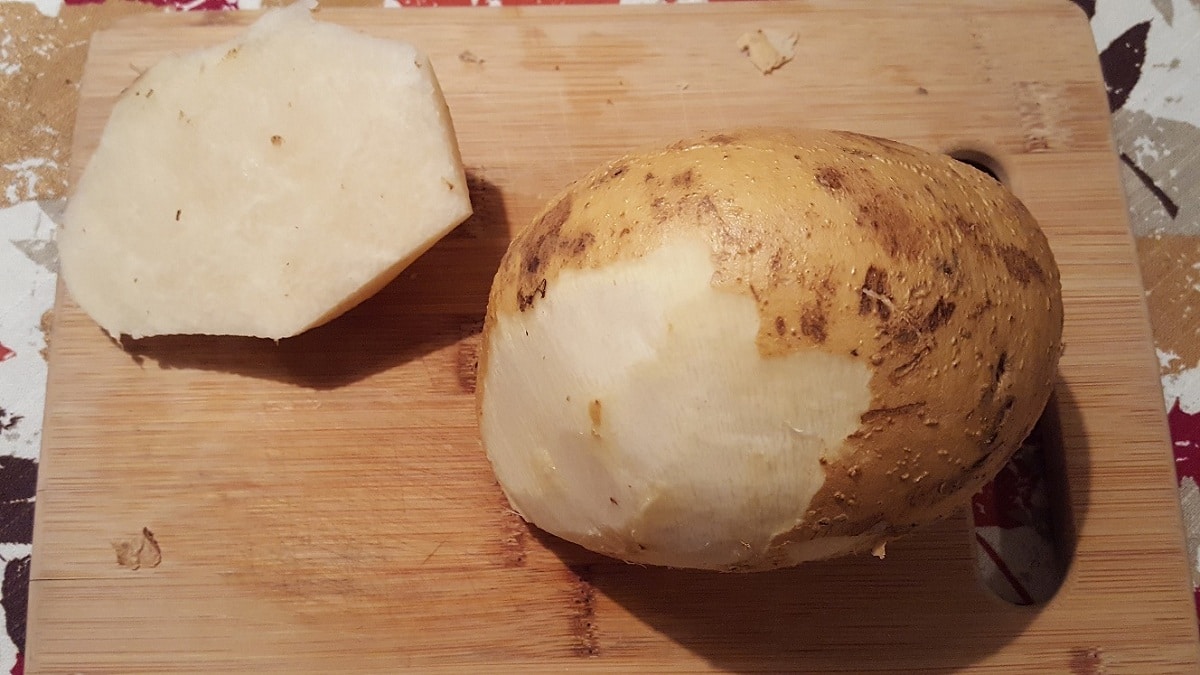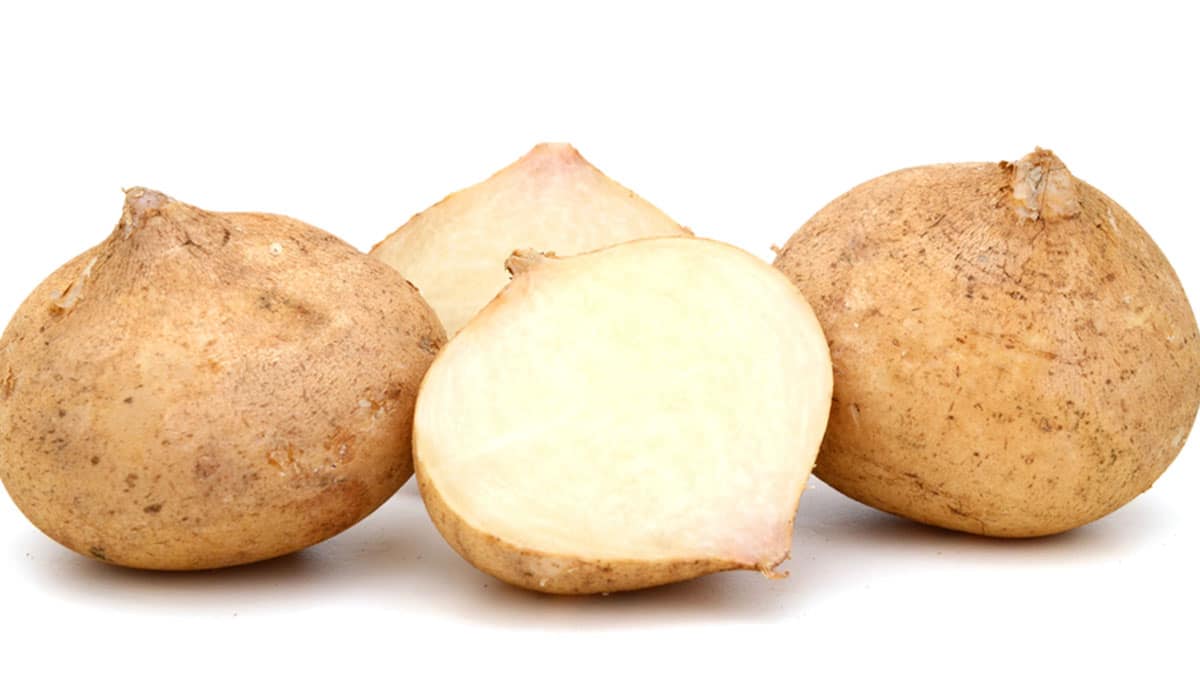
When we talk about tubers, the potato or sweet potato comes to mind. However, there are other edible tubers that have excellent characteristics and nutritional values. One of these tubers is the jícama. It is also known by the name of pelenga and is originally from the Mexican peninsula. It is identified by its white color and its sweet taste. It has a quite crunchy texture that is assimilated between the sweet potato and the apple. As with potatoes, it is a fairly versatile edible since it can be eaten both raw and in salads, cooked in a similar way to potatoes, and as a snack. Its scientific name is Pachyrhizus erosus.
In this article we are going to tell you about all the characteristics, properties and cultivation of jicama.
Key features

The jicama plant is related to legumes. It is a type of tuber that varies in size and weight. Usually usually weigh between 1 and 5 pounds and can reach 50 pounds in some places. Its shape is oval and it has a rough skin of a brown color. In appearance it is quite similar to the potato. Its meat is juicy and has a crunchy texture and a white color. When it is naturally it has a texture very similar to uncooked potato. The difference is that it has a crunchier texture and is juicier.
Its flavor can be compared to that of the apple and it is somewhat sweet. The name jicama means watery root. It has other common names depending on where we are. Among these names we find pelenga, sweet turnip, Mexican turnip and Mexican potato.
There are several types of jicama and the markets are sold separately according to their characteristics. These are the two types of jicama that exist:
- Water jicama: It is the type of jicama preferred by consumers. It is the one that you can find the most in the markets. Its root is rounder and the juice is more translucent.
- Milk jicama: It differs from that of water in that its shape is more elongated and the juice is milky-white in color, hence its name.
The edible part of this plant is the root. It can be consumed just like any other fruit or vegetable. It is a seasonal plant throughout the year, although the best time to sow it is from December to June in the northern hemisphere. The plant has adapted better to growing in hot, dry climates. This makes it a fairly easy growing plant to carry as it does not require too much care. Those specimens that are planted during the summer produce tastier jicamas, although in size they become somewhat smaller.
Nutritional properties of jicama

As we have mentioned before, it is a fairly versatile vegetable when it comes to cooking and has excellent nutritional properties. This tuber contains vitamins and minerals that are essential for health. In addition, it has a high content of dietary fiber and some amino acids.
Among the vitamins with the highest concentration we have vitamin C, group B and vitamin E. On the other hand, we have minerals such as copper and potassium and some amino acids such as histidine, valine, threonine, isoleucine and lysine.
Some people have found certain disadvantages in consuming this tuber. As with many other fruits and vegetables, jicama can be a source of bacterial contamination. This does not mean that it will cause problems frequently. The fact that it is contaminated by bacteria is very rare. However, the bacteria that most often attack jicama is Shigellosis. This bacteria usually disappears on its own after one to two weeks. This makes the severe jicama always buy in a trusted place where it is washed and stored properly.
The same can happen with the common potato. If not stored properly, it can become a toxic tuber. If the conservation and hygiene measures will be correct, there is no need to worry about it.
Health benefits of jicama

It is a tuber that not only has very positive nutritional properties, but also has a wide range of unique health benefits. Let's analyze what these benefits are:
- Prebiotic fiber: This tuber has a large amount of prebiotic fiber even though it is a root vegetable. Despite the nature of the pelenga, we find that it is a product low in starch, sugars and carbohydrates. We should not compare it with other tubers such as common potatoes, beets, turnips and rutabagas. With just one serving of a cup of jicama a day, we can obtain 25% of the necessities of daily life.
- It has a prebiotic carbohydrate known as inulin oligofructose. This carbohydrate cannot be digested within the stomach and therefore is fermented in the intestine. This benefits the digestive organs and the body in general. This bald hydrate known as inulin favors the good bacteria that live in our gastrointestinal tract.
- Since it is low in sugar, supports blood sugar control and weight loss. It is a vegetable rich in fiber and with a low glycemic index. This makes it an excellent food for anyone who needs to balance blood sugar levels. It is perfect for those patients who have diabetes or want to reduce their weight. It becomes one of the best weapons for a low-calorie diet since it has reduced its carbohydrate content, but it helps to stay satisfied without the need to starve or increase the calories that are ingested.
- Helps strengthen immune function. Since a large percentage of the immune system is located in the gastrointestinal tract, this tuber helps balance the bacteria found in the intestine.
- Benefits heart health: As with other vegetables, jicama has a high density of water and nutrients. Inulin has been linked through many studies to an improvement in cardiovascular health and a natural reduction in cholesterol levels.
I hope that with this information you can learn more about jicama and its properties.